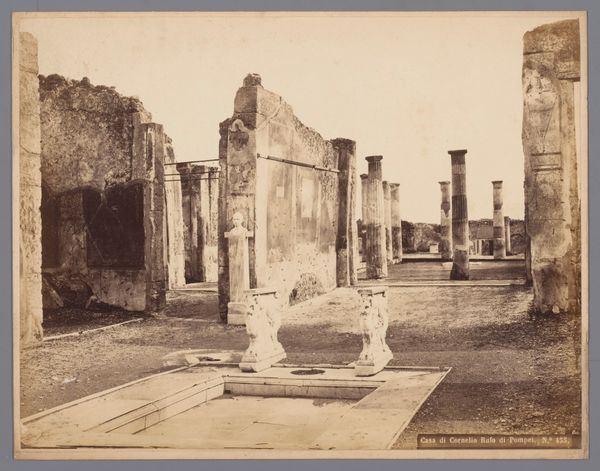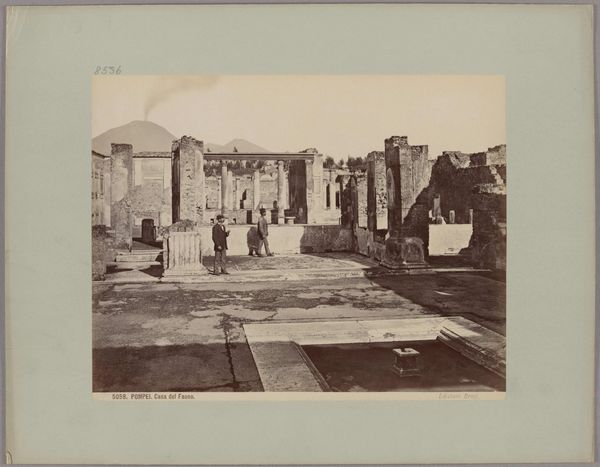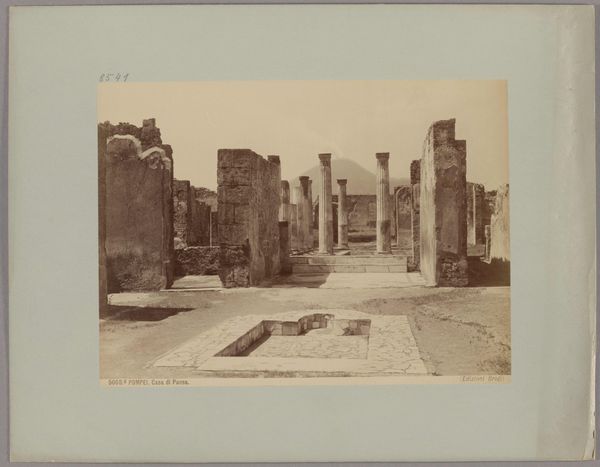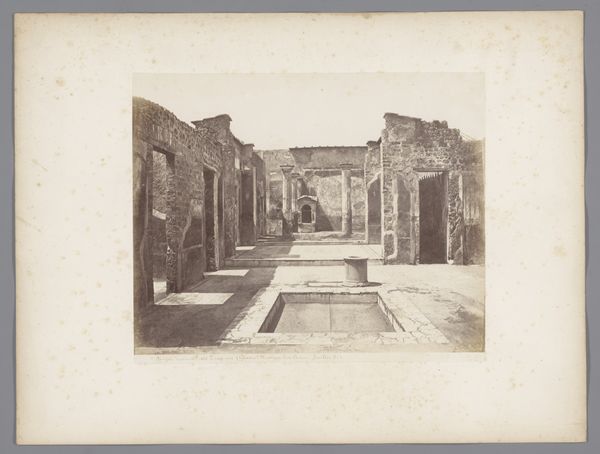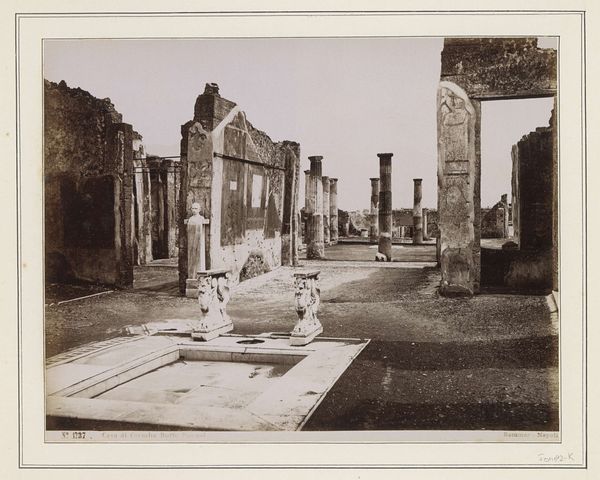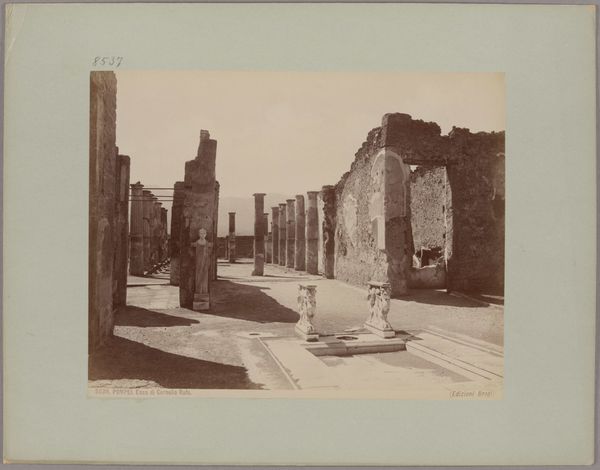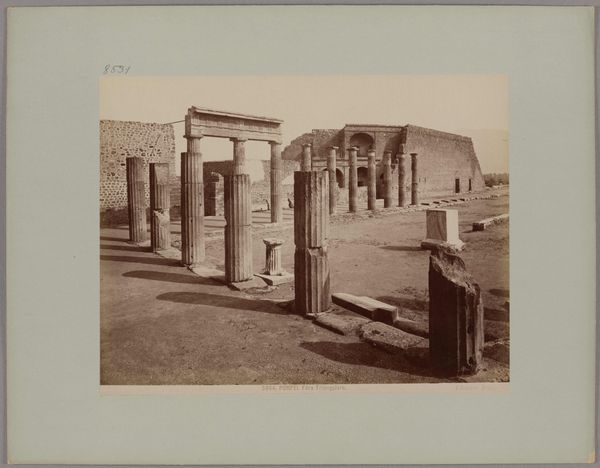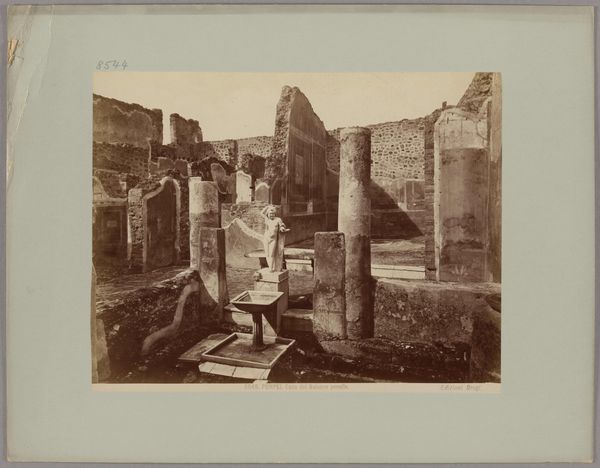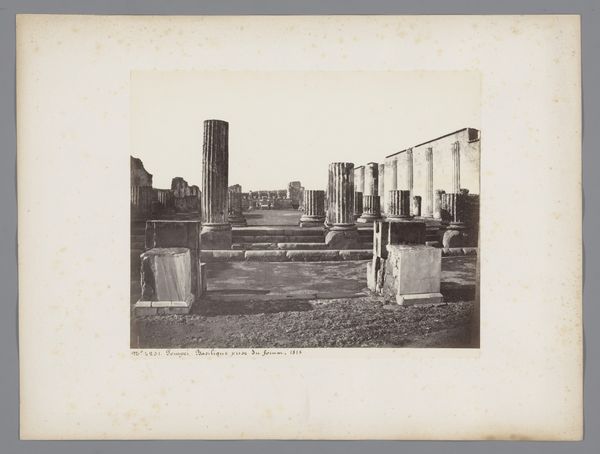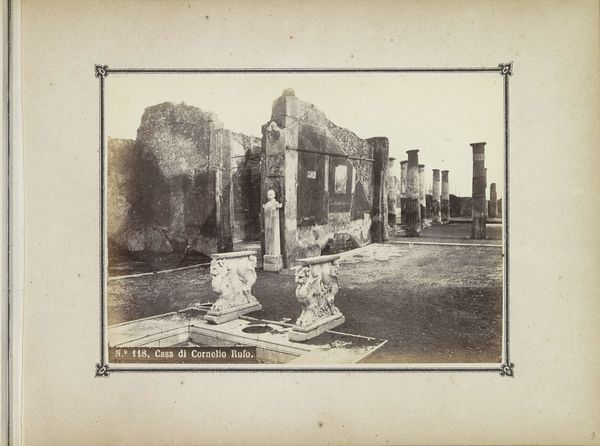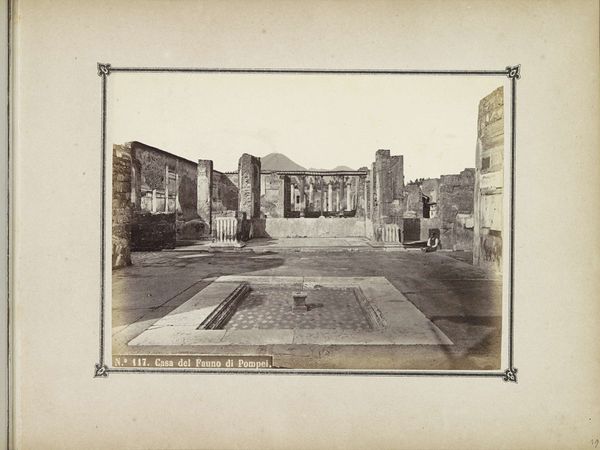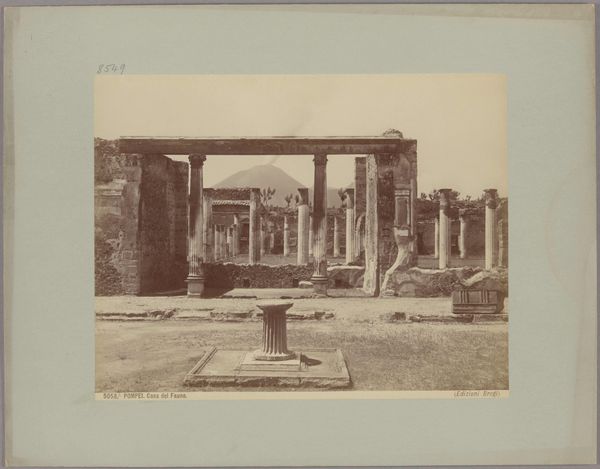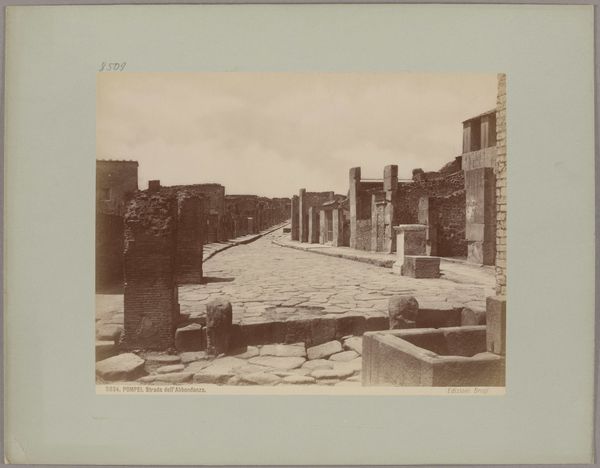
photography, architecture
#
muted colour palette
#
landscape
#
historic architecture
#
photography
#
ancient-mediterranean
#
19th century
#
cityscape
#
architecture
Dimensions: height 207 mm, width 250 mm
Copyright: Rijks Museum: Open Domain
Curator: This photograph by Giorgio Sommer, dating from between 1857 and 1914, captures the remnants of the Casa del Fauno in Pompeii. It’s quite striking, wouldn’t you say? Editor: A little melancholic, if I'm honest. The muted tones give it an antique feel, of course, but there’s something so empty about the composition, a feeling of irretrievable loss. What do you make of its materiality? Curator: The use of photography as a means of documentation is really what interests me here. It wasn't just about capturing an image, it was about creating a record of labor. Imagine the resources – the skilled workers excavating the site, then the photographer meticulously setting up their equipment in challenging conditions. This image isn't just about aesthetics; it's a product of complex social processes. Editor: Absolutely. But those crumbling columns, the empty courtyard—they evoke powerful symbols of fallen empires, the ephemerality of power. The Casa del Fauno was a place of immense wealth and status; what stories do these ruins still whisper, frozen in time? I wonder about the narratives it held. Curator: That's certainly part of it. I see also the very visible means by which that status was constructed. Look at the stonework—each block, each pillar carefully placed, a testament to the craftsmanship and sheer manpower that went into creating this domestic space. Editor: And the Faun, now absent from this photo, the figure itself serves as a potent symbol of Roman hedonism and connection to nature. His removal speaks to the displacement of pagan symbols in the modern age, it brings us questions about values, and a life philosophy we can now only see through fragments. Curator: Yes, but think about the very act of photographing it—a colonial gaze perhaps? How does this image factor into the broader system of archaeological exploitation and the commodification of the past in the 19th century? How was this “consumed”? Editor: A haunting perspective to be sure. Curator: It makes you wonder about its contemporary cultural function. The means by which it was created and the way that knowledge was disseminated… Editor: Thank you. I leave with a new lens through which to appreciate those ruins.
Comments
No comments
Be the first to comment and join the conversation on the ultimate creative platform.
